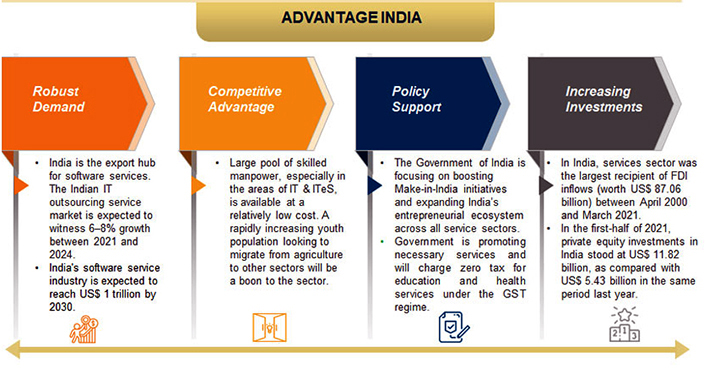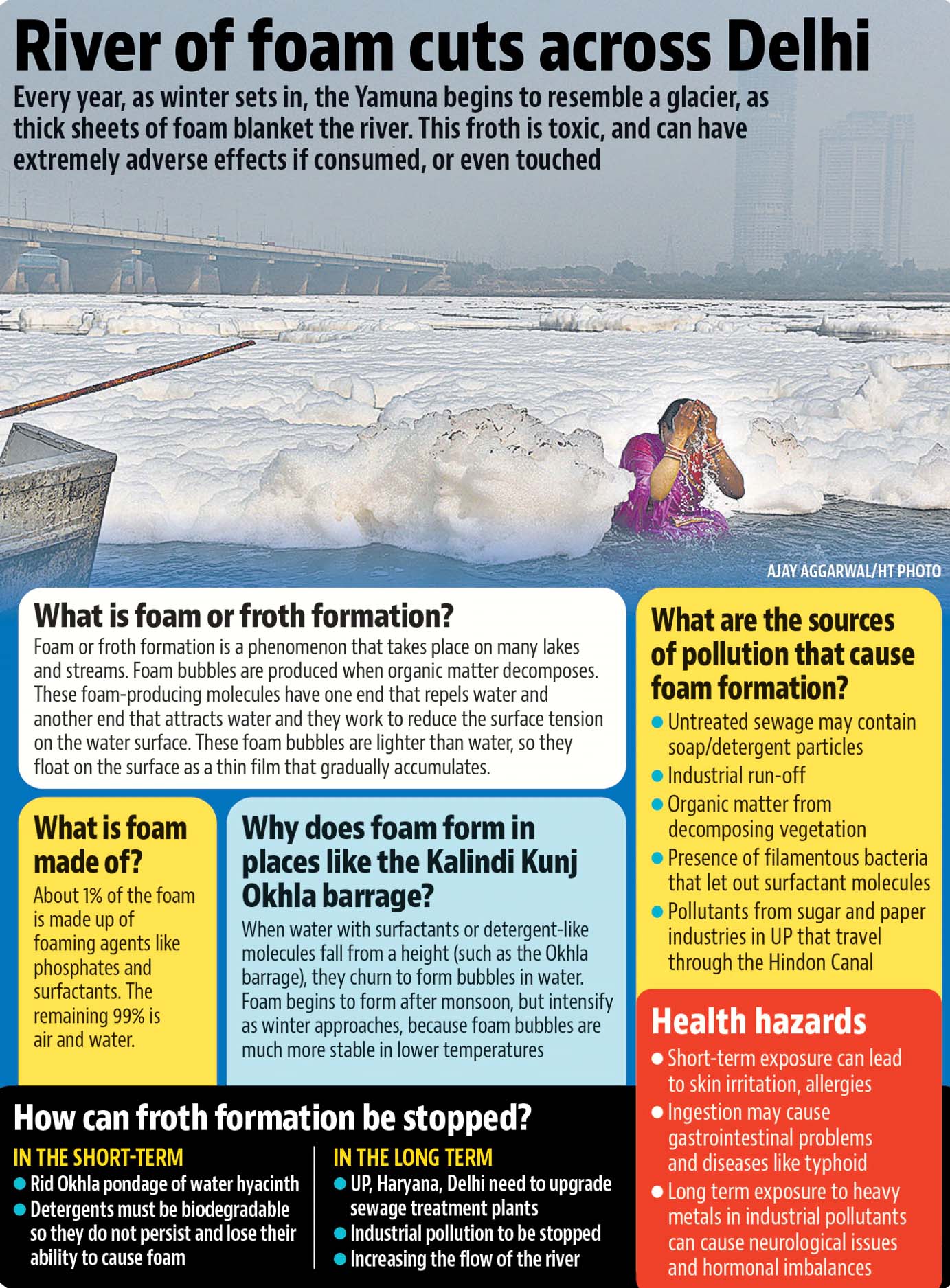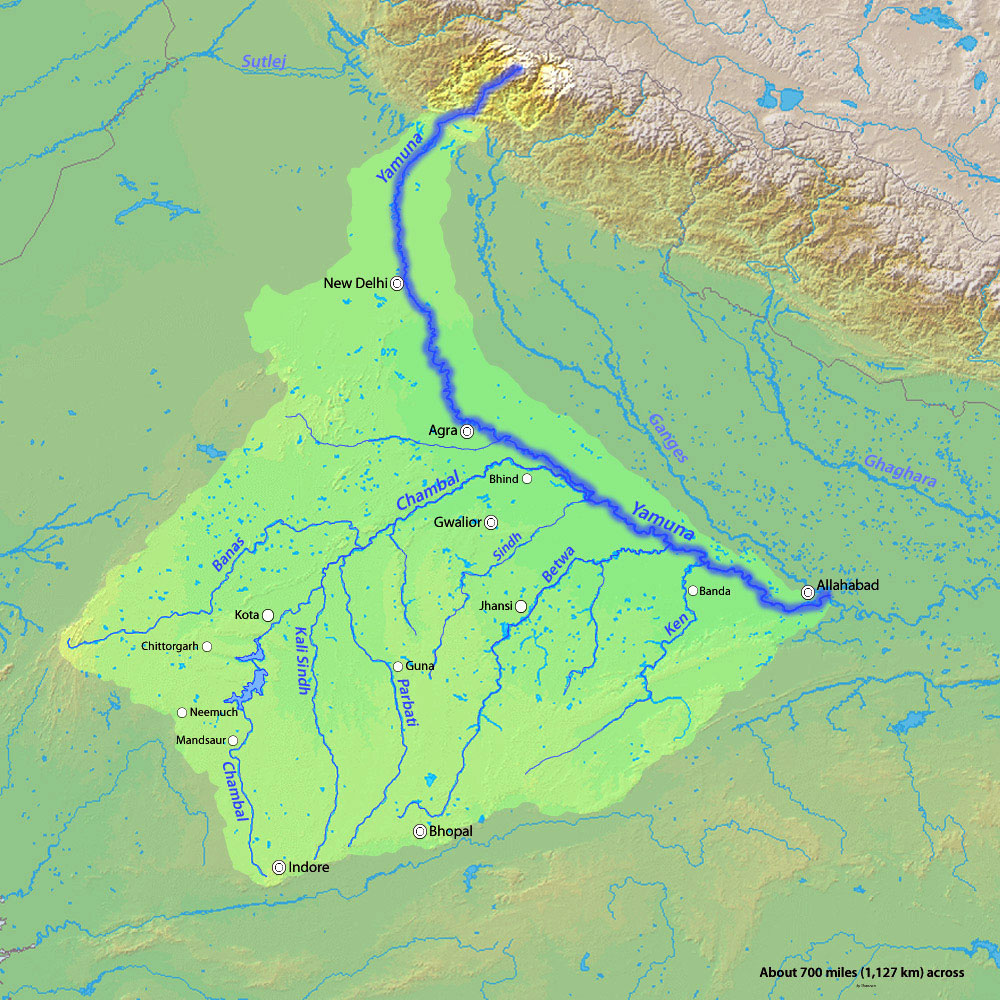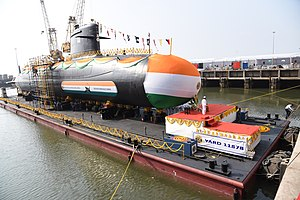Biodiversity & Environment
Global Resilience Index Initiative
Why in News
Recently, a global coalition of ten organisations launched the Global Resilience Index Initiative (GRII).
Key Points
- About:
- It was launched during the UNFCCC Conference of Parties (CoP) 26 adaptation day (8th November 2021), it will be the world’s first curated, open-source reference index.
- It has been launched to build a universal model for assessing resilience to climate risks.
- It will provide reference data on climate and natural hazard risks to inform and protect populations and economies, particularly in emerging and developing countries, form a basis for mobilising the trillions of investment needed to meet the Paris goals on climate-resilient development.
- It can be used in aggregated risk management across sectors and geographies.
- Goal: The coalition wants to achieve two immediate goals.
- First, they want to provide global open reference risk data developed using insurance risk modelling principles.
- Second, they want to provide shared standards and facilities applicable to a wide range of uses:
- Corporate climate risk disclosure.
- National adaptation planning and reporting.
- Planning of pre-arranged humanitarian finance.
- Partners & Supporters: GRII has been initiated with partial funding and in-kind contributions from the insurance sector and partner institutions such as:
- Coalition for Disaster Resilient Infrastructure (CDRI)
- Coalition for Climate Resilient Investment (CCRI)
- Need:
- Natural catastrophes cost nearly USD 200 billion globally in 2020. Since 1970, over 2 million people have died in climate-related disasters; 9 out of every 10 in developing countries.
- Almost every country has felt the harsh impact of climate change in recent years in some form or another.
- Systems and economies resilient to climate disruption can save millions of lives and livelihoods.
- Significance:
- The outcomes of this risk analysis will help close the insurance protection gap and direct investment and aid to where they are needed the most.
- It will help global economic sectors understand, in concrete terms, the value of building climate resilience and the costs of doing nothing, this will address the data emergency that is contributing to the climate crisis.
- It will enable asset owners to compare portfolio risks across geographies and hazards, as well as helping countries to prioritise national adaptation investments.


Internal Security
India’s Submarine Strength
Why in News
Experts say India has lost a decade in modernising its submarine fleet, while China has marched ahead in its larger naval and more specific submarine capabilities.
- Submarines first became a major factor in naval warfare during World War I (1914–18), also played a similar role on a larger scale in World War II (1939–45).
Key Points
- Number of Submarines in India:
- Currently, India has 15 conventional diesel-electric submarines, classified as SSKs, and one nuclear ballistic submarine, classified as SSBN. Most of India’s submarines are over 25 years old, and many are getting refitted.
- Classification of Submarines:
| Diesel-Electric Submarines (SSK) | Nuclear-Powered Attack Submarine (SSN) |
Nuclear-Powered Ballistic Missile Submarine (SSBN) |
|
|
|
- India’s Modernisation Plan:
- 30 - Year Plan: The 30-year plan (2000-30) for indigenous submarine construction, approved by the Cabinet Committee on Security in 1999, envisaged two production lines of six submarines each, built in India in partnership with a foreign Original Equipment Manufacturer (OEM).
- The projects were called P-75 and P-75I.
- It anticipated that India would get the 12 new submarines by 2012-15. Subsequently, India would make 12 of its own by 2030, taking the fleet size to 24, with the older submarines getting decommissioned.
- But the contract for P-75 was signed only by 2005, with France’s DCNS, now the Naval Group.
- P-75: Of the six being built, P-75 has delivered three Kalvari Class Scorpene submarines so far.
- P-75I: It is yet to take off, the Request for Proposal was issued in July 2021.
- It will be India’s first under the Strategic Partnership Model, which came up in 2015.
- 30 - Year Plan: The 30-year plan (2000-30) for indigenous submarine construction, approved by the Cabinet Committee on Security in 1999, envisaged two production lines of six submarines each, built in India in partnership with a foreign Original Equipment Manufacturer (OEM).
- Challenges to Indian Naval Buildup:
- China’s Naval Prowess:
- India’s underwater fleet continues to lack the requisite teeth despite the fact that high seas are the only domain in which India can checkmate China given its natural geographic advantages.
- China already has the world’s largest navy with 350 warships, including 50 conventional and 10 nuclear submarines.
- India’s Delay in Modernisation:
- For example, delay in signing the contract for P-75.
- Shortfall in Indian Navy Essentials:
- There are other significant shortfalls of the Indian Navy including essentials capacities such as “Advanced Towed Array Sonars (ATAS) to detect enemy submarines, heavyweight torpedoes to neutralize them, and varied air defense systems, all of which are critical not only to their survivability, but also their overall offensive capability.
- Deal Cancellation:
- India cancelled a deal for the heavy-weight Black Shark torpedoes, built by the Finmecannica subsidiary WASS, as a result of an unrelated corruption scandal that involved another subsidiary of Finmecannica, Augusta-Westland.
- Slow Development of AIP System:
- The Air Independent Propulsion (AIP) system allows submarines to stay underwater for longer periods of time without being detected.
- However, the development of the indigenous AIP system by the Defence Research and Development Organization (DRDO) has been delayed.
- Government’s Less Attention to Navy:
- Much of the Indian budget is focused on the Army, with the air force being a distant second and the navy a poor third.
- And with naval capability building proving time-consuming and capital-intensive, that leaves India stuck with a continued slow pace of development of its naval capabilities relative to other actors, even as competitors such as China forge ahead more quickly.
- China’s Naval Prowess:
Way Forward
- Unless the gap in naval prowess must be mitigated quickly, India will be handicapped further in countering China’s desire to dominate the Indian Ocean.
- The defence bureaucracy must quickly address the modernisation delay if India is to walk the talk on Quad (India, Australia, USA and Japan) and its Indo-Pacific ambitions.
- India needs to change its decision-making processes and its complicated acquisitions process to halt the slide in its relative capabilities.
Indian Economy
Boosting Services Export
Why in News
Recently, the Ministry of Commerce and Industry announced that it is working on a plan to reach a services export target of USD 1 trillion by 2030. This target is nearly five times of what India exported last fiscal (FY 2020).
Key Points
- Services Sector in India:
- Data Analysis: India is the world’s seventh-largest services exporter.
- Share of the services sector accounted for 54% of the total Gross Value Added (GVA) in FY21.
- The services sector is a key driver of India’s economic growth, providing employment to nearly 26 million and contributing about 40% to India’s total global exports.
- The services sector has also been the largest recipient of foreign direct investment, making up for 53% of the total inflows between 2000 and 2021.
- Spread: India’s services sector covers a wide variety of activities such as trade, hotel and restaurants, transport, storage and communication, financing, insurance, real estate, business services, community, social and personal services, and services associated with construction.
- Significance:
- Surplus in services trade has long narrowed the often-huge deficit in India’s merchandise shipments.
- With renewed focus and targeted government intervention, services trade surplus could rise further from as much as $89 billion in FY21 and almost wipe out the deficit caused by merchandise exports.
- This sector is boosting India’s transition from an ‘assembly economy’ to a ‘knowledge-based economy’.
- Skill India programme envisages to provide adequate training in market-relevant skills to over 40 crore youth by 2022.
- Surplus in services trade has long narrowed the often-huge deficit in India’s merchandise shipments.
- Purchasing Managers Index (PMI) is an indicator of business activity in the manufacturing and services sectors.
- Data Analysis: India is the world’s seventh-largest services exporter.
- Plan to Boost Services Exports:
- Diversifying Services Sector: There is a need to boost opportunities in high-growth segments beyond the dominant information technology and IT-enabled services (ITeS). For example:
- The opening up of the domestic legal services sector will benefit Indian lawyers as they would get huge opportunities in countries such as Europe, Australia and America.
- Further, the need is to focus on promising areas like higher education, hospitality and medical tourism.
- FTAs in Services: To support the services sector, the government has been actively pursuing market access opportunities via Free-Trade Agreements (FTAs) with key economies (including the UK, the EU, Australia and the UAE).
- Fine Tuning SEIS Scheme: The government is working on a programme that could replace the Service Exports from India Scheme (SEIS) in its current form.
- According to the government, the services industry needs to shun the crutches of government subsidies.
- This will encourage firms to raise competitiveness.
- Also, the subsidy amount can be utilised for those who need it more.
- Diversifying Services Sector: There is a need to boost opportunities in high-growth segments beyond the dominant information technology and IT-enabled services (ITeS). For example:
Service Exports from India Scheme
- It was introduced in April 2015 for 5 Years under the Foreign Trade Policy of India 2015-2020.
- Earlier, this Scheme was named as Served from India Scheme (SFIS Scheme) for Financial Year 2009-2014.
- Under the scheme, the government gives 3-5% incentive on net foreign exchange earned in the form of duty-credit scrips. Scrips can be used for payment of basic and additional Customs duties on goods imported.
Way Forward
- Production-linked Incentive Like Scheme in Services: The government should consider something for the services sector, in line with the production-linked incentive scheme.
- Becoming Part of Global Value Chains: India should be striving to embed itself in global value chains.
- If India wants to become a major exporter, it should specialize more in the areas of its comparative advantage and achieve significant quantity expansion.
- B2B Model: Developing a dynamic Business 2 Business (B2B) portal, which can be used by service providers to reach out to the markets abroad.
- Foreign Trade Policy (FTP): Unless the government focuses on the sector in the forthcoming Foreign Trade Policy (FTP) by announcing scheme-based export incentives and provides interim relief by continuing with the existing schemes in the short run, the sector will lose the momentum it has gained in the first five months of 2021-22.


Indian Polity
National Legal Services Day
Why in News
The National Legal Services Day (NLSD) is celebrated on 9th November every year to spread awareness for ensuring reasonable fair and justice procedure for all citizens.
Key Points
- About:
- NLSD was first started by the Supreme Court of India in 1995 to provide help and support to poor and weaker sections of the society.
- Free legal services are provided in matters before Civil, Criminal and Revenue Courts, Tribunals or any other authority exercising judicial or quasi judicial functions.
- It is observed to make the citizens of the country aware of the various provisions under the Legal Services Authorities Act and the rights of the litigants. On this day, each jurisdiction organizes legal aid camps, Lok adalats, and legal aid programmes.
- Constitutional Provisions:
- Article 39A of the Constitution of India provides that State shall secure that the operation of the legal system promotes justice on a basis of equal opportunity, and shall in particular, provide free legal aid, by suitable legislation or schemes or in any other way, to ensure that opportunities for securing justice are not denied to any citizen by reason of economic or other disability.
- Articles 14 and 22(1) also make it obligatory for the State to ensure equality before law and a legal system which promotes justice on a basis of equal opportunity to all.
- Objectives of Legal Services Authorities:
- Provide free legal aid and advice.
- Spread legal awareness.
- Organise lok adalats.
- Promote settlements of disputes through Alternative Dispute Resolution (ADR) Mechanisms. Various kinds of ADR mechanisms are Arbitration, Conciliation, Judicial settlement including settlement through Lok Adalat, or Mediation.
- Provide compensation to victims of crime.
- Legal Services Institutions for providing Free Legal Services:
- National Level:
- National Legal Services Authority (NALSA). It was constituted under the Legal Services Authorities Act, 1987. The Chief Justice of India is the Patron-in-Chief.
- State Level:
- State Legal Services Authority. It is headed by the Chief Justice of the State High Court who is its Patron-in-Chief.
- District Level
- District Legal Services Authority. The District Judge of the District is its ex-officio Chairman.
- Taluka/Sub-Division Level
- Taluka/Sub-Divisional Legal Services Committee. It is headed by a senior Civil Judge.
- High Court: High Court Legal Services Committee
- Supreme Court: Supreme Court Legal Services Committee.
- National Level:
- Persons Eligible for Getting Free Legal Services:
- Women and children
- Members of SC/ST
- Industrial workmen
- Victims of mass disaster, violence, flood, drought, earthquake, industrial disaster.
- Disabled persons
- Persons in custody
- Those persons who have annual income of less than the amount prescribed by the respective State Government, if the case is before any court other than the Supreme Court, and less than Rs. 5 Lakhs, if the case is before the Supreme Court.
- Victims of Trafficking in Human beings or begar.
Indian Economy
Legal Metrology (Packaged Commodities), Rules 2011
Why in News
The Department of Consumer Affairs has omitted the Rule 5 of the Legal Metrology (Packaged Commodities), Rules 2011 to safeguard interest of consumers.
- Rule 5 defines the Schedule II prescribing the pack sizes of various types of commodities.
Key Points
- About the Amendment:
- Declaration of MRP:
- Declaration of Maximum Retail Price (MRP) in Indian currency inclusive of all taxes on pre-packaged commodities and date of manufacture has been made mandatory.
- New Provision of Unit Sale Price:
- Now the quantities can be expressed in terms of the number or unit or piece or pair or set or such other word which represents the quantity in the package.
- It will allow easier comparison of the prices of the commodities at the time of purchase.
- Earlier, for items sold by number, the symbol used were N or U.
- Now the quantities can be expressed in terms of the number or unit or piece or pair or set or such other word which represents the quantity in the package.
- Declaration of MRP:
- Legal Metrology (Packaged Commodities) Rules, 2011:
- It regulates pre-packaged commodities in India and inter – alia mandate certain labeling requirements prior to sale of such commodities.
- The main aim of the Legal Metrology Act, 2009 is to establish and enforce standards of weights and measures, regulate trade and commerce in weights, measures and other goods which are sold or distributed by weight, measure or number and any other matter that is connected to the same.
- According to the Act, the Central Govt. may appoint a Director of Legal Metrology to perform duties related to inter-state trade and commerce.
- The State Govt. may appoint a Controller of Legal Metrology to perform duties related to intra-state trade and commerce.
- Related Initiatives:


Geography
Leonids Meteor Shower
Why in News
The annual Leonids Meteor Shower has begun and will be active between 6th and 30th November, with peak activity expected on 17th November.
Key Points
- Meteor: It is a space rock or meteoroid that enters Earth's atmosphere.
- Meteoroids are objects in space that range in size from dust grains to small asteroids.
- Most are pieces of other, larger bodies that have been broken or blasted off. These come from comets, asteroids, planets and the Moon.
- When meteoroids enter Earth’s atmosphere (or that of another planet, like Mars) at high speed and burn up, the fireballs or “shooting stars” are called meteors.
- Fireballs are larger explosions of light and color that can persist longer than an average meteor streak. This is due to the fact that fireballs originate from larger particles of cometary material.
- When a meteoroid survives its journey through the atmosphere and hits the ground, it’s called a meteorite.
- Meteoroids are objects in space that range in size from dust grains to small asteroids.
- Meteor Shower:
- When Earth encounters many meteoroids at once, it is called a meteor shower.
- Comets, like Earth and the other planets, also orbit the sun. Unlike the nearly circular orbits of the planets, the orbits of comets are usually quite lop-sided.
- As a comet gets closer to the sun, some of its icy surface boils off, releasing lots of particles of dust and rock (meteoroids).
- This comet debris gets scattered along the comet's path, especially in the inner solar system (including planets Mercury, Venus, Earth and Mars).
- Then, several times each year as Earth makes its journey around the sun, its orbit crosses the orbit of a comet, which means Earth encounters a bunch of comet debris.
- Meteor showers are named for the constellation where the meteors appear to be coming from. So, for example, the Orionids Meteor Shower, which occurs in October each year, appears to be originating near the constellation ‘Orion the Hunter’.
- When Earth encounters many meteoroids at once, it is called a meteor shower.
- Leonids Shower:
- The debris that forms this meteor shower originates from a small comet called 55P/Tempel-Tuttle in the constellation Leo, which takes 33 years to orbit the sun.
- The Leonids are considered to be a major shower that features the fastest meteors which typically travel at speeds of 71 km per second, although the rates are often as low as 15 meteors per hour.
- The Leonids are also called fireballs and earthgrazer meteors.
- Fireballs, because of their bright colours, and earthgazer, because they streak close to the horizon.
- A Leonid shower turns into a meteor storm every 33 years and when it happens hundreds to thousands of meteors can be seen every hour. The last Leonid meteor storm took place in 2002.
- A meteor storm should have at least 1,000 meteors per hour.
Important Facts For Prelims
Srinagar: UNESCO Creative Cities Network
Why in News
Recently, the United Nations Educational, Scientific and Cultural Organization (UNESCO) designated Srinagar as a part of UNESCO Creative Cities Network (UCCN).
- After Mumbai, Chennai, Hyderabad, Varanasi and Jaipur, Srinagar is the sixth Indian city to achieve this distinction.
Key Points
- About:
- The Srinagar city has been designated the creative city in the field of Crafts and Folk Arts - only second city in India in this category after Jaipur.
- It will not only give global recognition to the Srinagar city but also help it in international funding, tie-ups with craft universities and pitching craft as a product.
- With this, the capital city of Jammu and Kashmir (Srinagar) has entered the club of 295 creative cities network across the world.
- Every year, UNESCO seeks applications for various cities across the globe for putting them under its UCCN project. The applications in India are routed through the Ministry of Culture.
- UNESCO Creative Cities Network (UCCN):
- It was created in 2004.
- It aims to “promote cooperation among cities which recognize creativity as a strategic factor in their urban development”.
- Sustainable Development Goal 11 aims for Sustainable Cities and Communities.
- The network covers seven creative fields: crafts and folk arts, media arts, film, design, gastronomy, literature and music.
- Indian Cities on UCCN:
- Srinagar - Crafts and Folk Arts (2021)
- Mumbai – Film (2019).
- Hyderabad – Gastronomy (2019).
- Chennai- Creative city of Music (2017).
- Jaipur- Crafts and Folk Arts (2015).
- Varanasi- Creative city of Music (2015).
UNESCO
- About:
- It is a specialized agency of the United Nations (UN). It seeks to build peace through international cooperation in Education, the Sciences and Culture.
- It was founded in 1945 and is located in Paris, France.
- Major Initiatives of UNESCO:
- Reports:
- UNESCO Science Report
- Global Education Monitoring Report
- State of the Education Report for India


Important Facts For Prelims
Frothing in the Yamuna
Why in News
Recently, a layer of froth was seen floating over parts of the Yamuna river, which has now become a repeat occurrence in Delhi.
- Earlier, high levels of ammonia in Yamuna resulted in frequent disruption to Delhi’s water supply.
Key Points
- About:
- Steps Taken to Stop Froth Formation:
- The Delhi Pollution Control Committee (DPCC) banned the sale, storage and transportation of soaps and detergents not conforming to the quality standards set by the Bureau of Indian Standards (BIS).
- The fifth report of the National Green Tribunal (NGT)-appointed Yamuna Monitoring Committee notes that though BIS standards for detergents have been improved, it is not clear whether these standards will actually be enforced.
- The role of regulatory bodies like the Central Pollution Control Board (CPCB), DPCC and Pollution Control Boards (PCBs) is generally limited to implementing discharge/effluent standards.
Yamuna
- Source:The river Yamuna, a major tributary of river Ganges, originates from the Yamunotri glacier near Bandarpoonch peaks in the Mussoorie range of the lower Himalayas at an elevation of about 6387 meters above mean sea level in Uttarkashi district of Uttarakhand.
- Basin: It meets the Ganges at the Sangam (where Kumbh mela is held) in Prayagraj, Uttar Pradesh after flowing through Uttarakhand, Himachal Pradesh, Haryana and Delhi.
- Length: 1376 km
- Important Dam: Lakhwar-Vyasi Dam (Uttarakhand), Tajewala Barrage Dam (Haryana) etc.
- Important Tributaries: Chambal, Sindh, Betwa and Ken.
Important Facts For Prelims
SUBMARINE ‘VELA’
Why in News
Recently, the fourth Scorpene Submarine ‘INS Vela’ of Project P-75 has been delivered to the Indian Navy.
Key Points
- Scorpene Class Submarine:
- The submarines in the Project-75 Scorpene Class are powered by diesel-electric propulsion systems.
- Scorpene is one of the most sophisticated submarines, capable of undertaking multifarious missions including anti-surface ship warfare, anti-submarine warfare, intelligence gathering, mine laying, and area surveillance.
- The Scorpene class is the Navy’s first modern conventional submarine series in almost two decades since INS Sindhushastra, procured from Russia in July 2000.
- Project 75:
- It is a programme by the Indian Navy that entails building six Scorpene Class attack submarines.
- The design of the Kalvari class of submarines is based on the French Scorpene class of submarines.
- It is given support by the Department of Defence Production (Ministry of Defence) and Indian Navy throughout its various phases of construction.
- The Mazagon Dock limited (MDL) is manufacturing six Scorpene submarines with technology assistance from Naval Group of France under a USD 3.75 bn deal signed in October 2005.
- MDL is a defence public sector undertaking shipyard under the Ministry of Defence.
- Other Submarines under Project-75:
- It is a programme by the Indian Navy that entails building six Scorpene Class attack submarines.


Important Facts For Prelims
CRPF Launches Chaupal to De-Stress Personnel
Why in News
Recently, the Central Reserve Police Force (CRPF) has decided to start a ‘Chaupal’ like get-together for its personnel to vent their mental agony.
- Chaupal is a popular meeting activity in the rural areas.
Key Points
- About:
- Once or twice a week, 18-20 personnel will sit in chairs in a circle outdoors, perhaps under a tree. The chaupal, which shall be planned beforehand, will be attended by personnel of all ranks, all of whom will be in civilian clothes.
- Company, platoon, or section commanders must necessarily be part of the chaupal “group sharing exercise”.
- Senior officials will interact with the troopers to know their difficulties and other issues which can lead to mental stress.
- Regular Yoga classes, daily exercises, counselling and other remedial measures are there in the system but something more has to be done to weed out the mental stress and fatigue of the forces.
- Once or twice a week, 18-20 personnel will sit in chairs in a circle outdoors, perhaps under a tree. The chaupal, which shall be planned beforehand, will be attended by personnel of all ranks, all of whom will be in civilian clothes.
- Incidents of Suicide:
- There have been over 100 cases of suicides in the largest para- military force from 2020 till September 2021. The highest number of fratricides have been committed in 2021.
- In 2017, 2018, 2019 and 2020 the number of suicides among the CRPF were 38, 38, 43 and 60, respectively.
- Reasons for Suicide:
- Domestic problems, illness, financial problems, sanction of leave to the jawans, and sometimes tough postings are some of key factors behind the suicides.
Central Reserve Police Force (CRPF)
- CRPF came into existence as Crown Representative’s Police on 27th July 1939. It became the Central Reserve Police Force on enactment of the CRPF Act on 28th December 1949.
- The mission of the CRPF is to enable the government to maintain Rule of Law, Public Order and Internal Security effectively and efficiently, to Preserve National Integrity and Promote Social Harmony and Development by upholding the supremacy of the Constitution.
- It is one of the premier Central Armed Police Forces of India (under the Ministry of Home Affairs).









